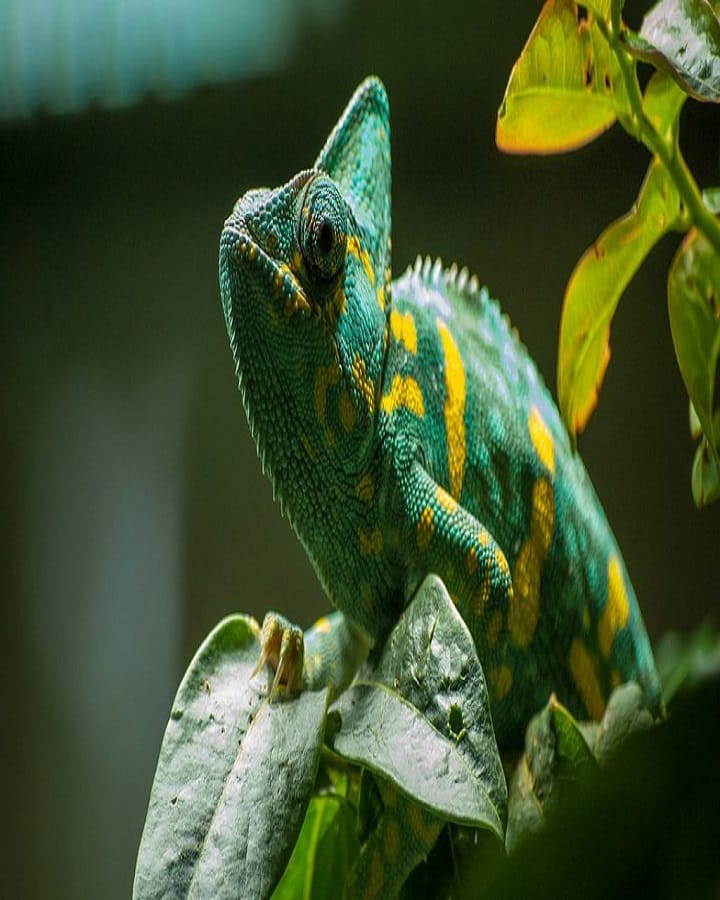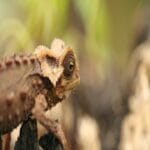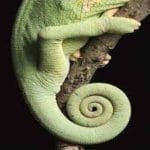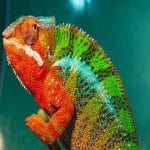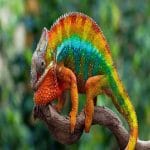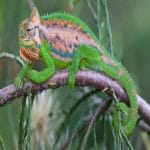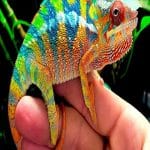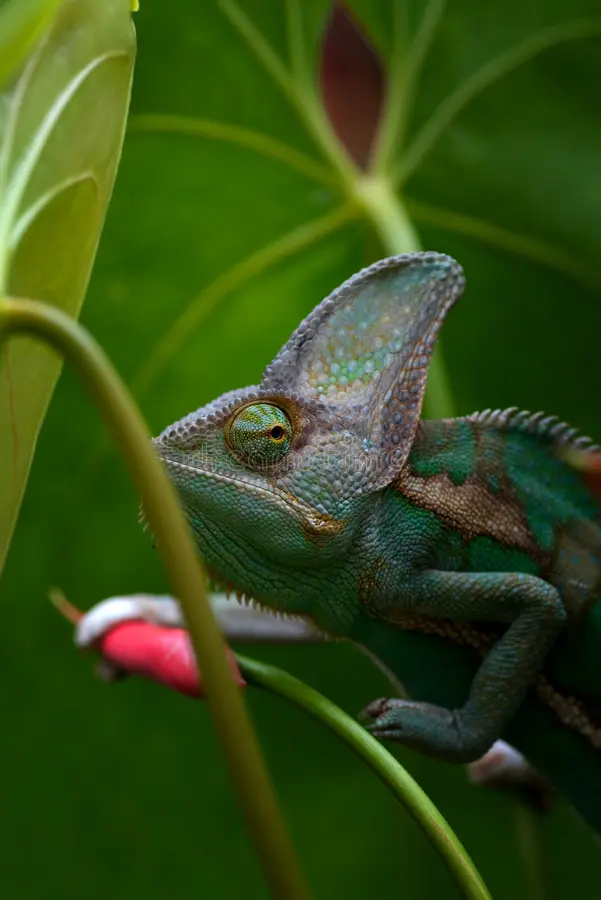
Image Credit – Hema
In the world of reptiles, few creatures are as fascinating and mysterious as the Dead Leaf Chameleon (Brookesia superciliaris). Native to the rainforests of Madagascar, this small, unassuming chameleon is a master of camouflage, blending so perfectly into its surroundings that it often goes unnoticed even by the most attentive eyes.
The Dead Leaf Chameleon: Nature’s Master of Disguise
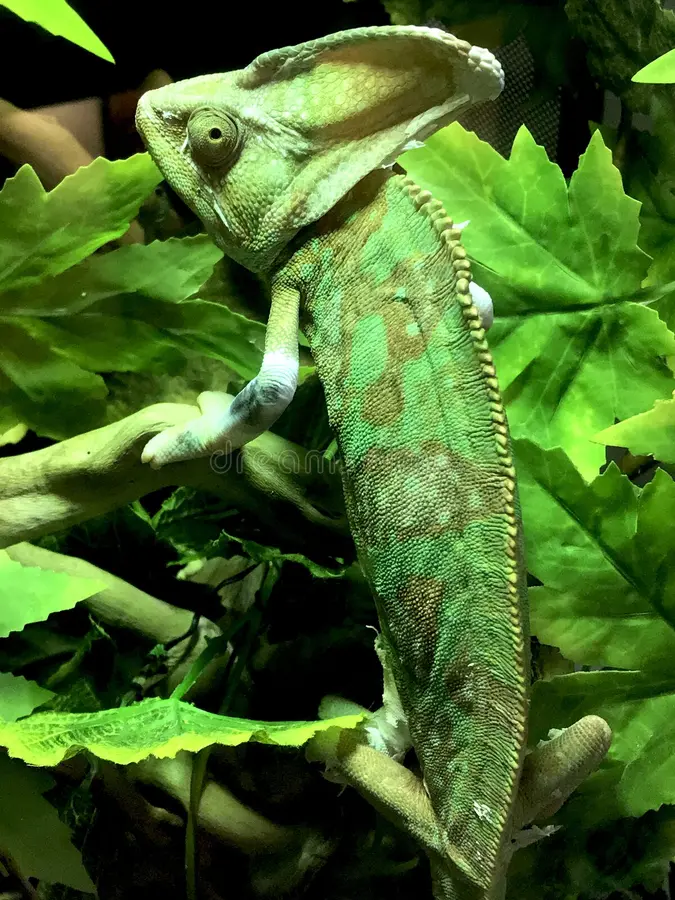
Nature’s Disappearing Act
What makes the dead leaf chameleon so remarkable is its uncanny resemblance to a decaying leaf. Its flattened body, textured skin, mottled brown and tan coloration, and even its tail, which curls like a dry leaf stem, make it almost indistinguishable from actual forest litter. This disguise is not just for show—it’s an essential survival strategy in the predator-rich ecosystems of Madagascar. When threatened, the chameleon will freeze and sway gently, mimicking a leaf caught in the breeze. This behavior, combined with its coloring, renders it nearly invisible to birds, snakes, and other predators.
A Tiny Wonder
Unlike the larger, more colorful chameleons often seen in pet stores or documentaries, the Dead Leaf Chameleon is quite small. Adults usually measure between 2.5 to 4 inches (6 to 10 cm) from head to tail. Despite their size, they are fully equipped with the classic chameleon traits: independently rotating eyes, a projectile tongue for catching insects, and a prehensile tail used for climbing and balance.
Their diminutive size and slow, deliberate movements contribute further to their camouflage strategy. They spend most of their time on the forest floor or low branches, slowly creeping through the undergrowth in search of insects and other small invertebrates.
Habitat and Behavior
Endemic to Madagascar, dead leaf chameleons prefer the dense, humid forests where the forest floor is layered with decomposing vegetation. This habitat provides the perfect backdrop for their leaf-like disguise.
They are solitary and territorial animals, usually interacting only during the breeding season. Males may engage in subtle displays to ward off rivals or attract females, such as body puffing and head bobbing. After mating, the female lays a small clutch of eggs—usually 2 to 5—burying them in moist soil or leaf litter where they incubate for several months.
Conservation Status
While the Dead Leaf Chameleon isn’t currently listed as endangered, its natural habitat is under constant threat from deforestation and habitat degradation in Madagascar. The country’s unique ecosystems are rapidly being altered by logging, agriculture, and urban development. Because many Brookesia species, including the Dead Leaf Chameleon, have such limited ranges, even minor habitat disturbances can have a significant impact.
Additionally, these tiny chameleons are sometimes targeted for the exotic pet trade, which, if unregulated, could pose further threats to their populations.
Keeping One as a Pet?
While it may be tempting to keep a Dead Leaf Chameleon as a pet due to its unique appearance and compact size, they are not recommended for novice reptile owners. They require specific conditions: high humidity, a stable temperature range, and a carefully managed enclosure with lots of natural cover. Moreover, they can be stressed easily by handling and environmental changes.
If you are considering one, it’s vital to ensure that the animal was captive-bred and not taken from the wild. Supporting reputable breeders helps reduce the pressure on wild populations and supports ethical animal care practices.
A Marvel of Evolution
The Dead Leaf Chameleon is a beautiful example of evolution’s creativity. With its cryptic coloration and expert mimicry, it reminds us that nature often hides its most extraordinary wonders in plain sight. Whether you’re a herpetologist, a wildlife enthusiast, or just someone who appreciates the quiet marvels of the natural world, this tiny reptile is sure to captivate your imagination.
So next time you’re walking through a rainforest trail in Madagascar, watch your step—you might be walking right past one of nature’s finest illusions.
Frequently Asked Questions
What makes the dead leaf chameleon’s camouflage so effective?
The Dead Leaf The chameleon’s camouflage mimics a dried leaf, complete with a curled tail and mottled brown coloring. This helps it blend perfectly with the forest floor in Madagascar, making it nearly invisible to predators.
Can you keep a dead leaf chameleon as a pet?
Yes, but they’re best for experienced reptile keepers. Dead leaf chameleons require a high-humidity habitat, minimal handling, and specific temperature control. Always choose captive-bred pets to support conservation.
Where is the dead leaf chameleon found, and what is its natural habitat like?
The dead leaf chameleon is native to Madagascar, mainly inhabiting moist, dense rainforests. Its ideal habitat includes leaf litter, low vegetation, and high humidity to support its camouflage and lifestyle.

